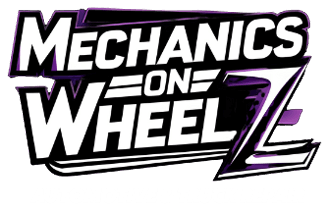As the temperature starts to drop and the snow begins to fall, it’s time to get your snowblower out of storage. But before you can start clearing your driveway, there are a few things you need to do to make sure your snowblower is ready to go.
First, double-check that there’s fresh, clean gasoline in the fuel tank. If your gas has been sitting in the snow blower for 6 months or more, it’s likely absorbed moisture which will cause it to not work properly. Additionally, if you didn’t add fuel stabilizer to the gas before you stored it, the fuel may have lost some vitality. In either case, drain your fuel tank and fill it back up with fresh gasoline that doesn’t contain any ethanol. Older gas can also form gummy deposits in your fuel filter and fuel line so look into this as well and replace if needed. When checking on your fuel lines keep in mind they can crack or become damaged so check for these issues as well. When you have a clean fuel filter and fuel line, your carburetor is able to function properly and deliver the right amount of gas to the engine. Following these simple steps will help ensure that your snowblower starts up easily and runs smoothly all winter long.
If you want to avoid the embarrassment of having to call your neighbor to come start your snowblower for you, be sure to double-check the fuel shutoff valve and safety key switch before attempting to start the engine. It’s easy to forget these things if you haven’t used your snowblower in a while, but trust me, you don’t want to be stuck out in the cold trying to figure out why your snowblower won’t start. So save yourself the trouble and just take a quick moment to make sure everything is in the right position before hitting that start button. Trust me, it’s worth it.
Choke and prime your snowblower if necessary to get the engine going. Check the temperature outside to determine whether or not you need to prime your snowblower. If it is below freezing outside, you will want to prime the carburetor to help get it running. However, if it is warm outside skip priming as this may flood the engine.
Before you engage your snowblower throttle, there’s something important you need to do: double-check that your throttle is positioned three-quarters or higher. It might seem like a small thing, but trust us, it’s crucial. After all, you don’t want to end up like the guy who forgot to do this and ended up with a snowblower that just wouldn’t move. So take our advice and make sure your throttle is in the right position before you engage it. You’ll be glad you did.
If you’re having trouble starting your snowblower, the first thing you should check is the spark plug. Remove it and look for three common issues: fuel on the spark plug, an issue with the spark plug gap, or a crack in your spark plug. If there’s fuel on your spark plug, it likely means you flooded your engine while trying to start it. So just clean the fuel off and try again. If the gap between your electrodes is too wide or too narrow, the feeler gauge won’t catch them and cause your spark plug to malfunction. You want the gauge to go through the gap with just a bit of resistance. And finally, if there’s a crack in your spark plug, it’ll need to be replaced. So take a trip to your local hardware store and pick up a new one. With any luck, this will solve your starting issue. But if not, there are plenty of other mechanical issues that could be to blame
Okay, so you’ve checked the gas, the oil, the spark plugs, the carburetor, and everything else… but your snowblower still won’t start. The only thing left to check is the starter. And let’s be honest, this is probably the problem. The starter on a snowblower is like the mobile mechanic that always seems to show up when your car breaks down: it’s just not built to last. So if you’re having trouble starting your machine, it’s probably time to get the starter replaced. But don’t worry, we can help you with that. Just give us a call and we’ll get you all fixed up.

